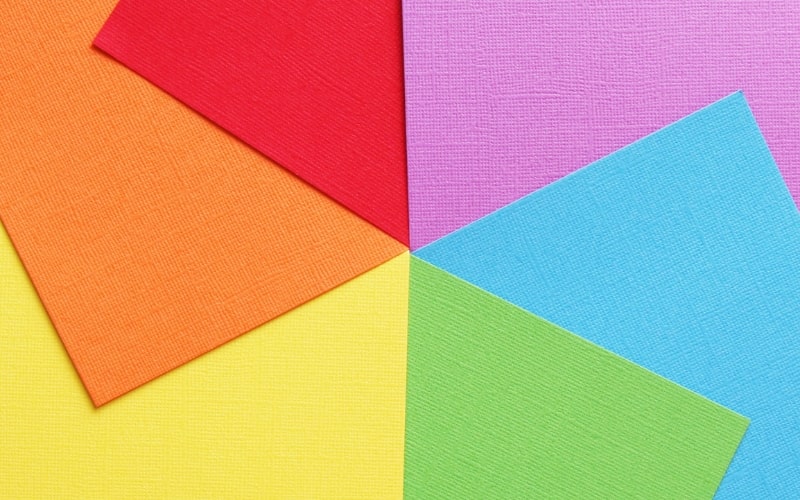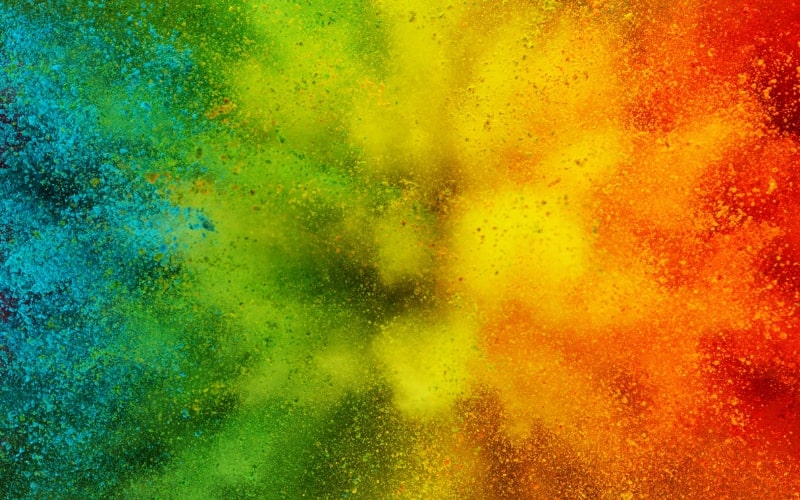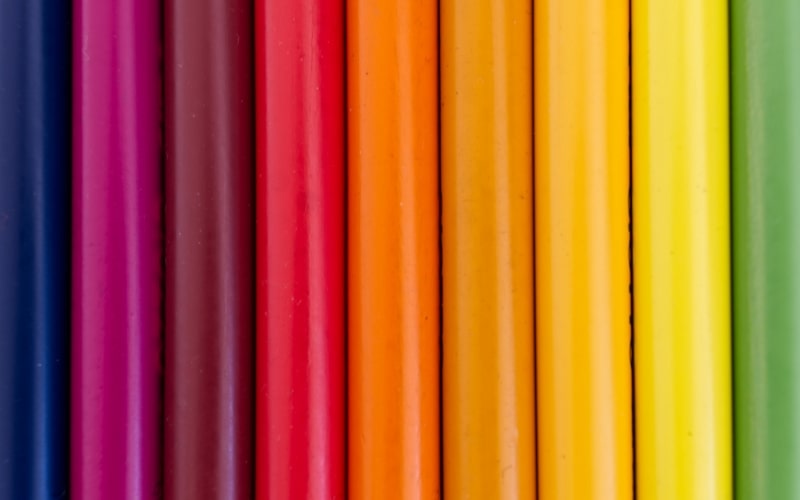Choosing the right color palette for your website is more than just an aesthetic decision; it’s a strategic move that can significantly impact your brand’s perception, user experience, and even conversion rates. Color theory is the science and art of using colors to create visual harmony and evoke specific emotions. Understanding the principles of color theory allows web designers to craft compelling and cohesive designs that resonate with their audience.
From the basics of primary, secondary, and tertiary colors to the complex relationships illustrated by the color wheel, each aspect of color theory plays a crucial role in web design. Different colors evoke different emotions and associations, influenced by cultural perceptions and psychological responses. For instance, while red might signify urgency and passion in Western cultures, it symbolizes luck and celebration in Eastern contexts. Similarly, the strategic use of contrast ensures readability and accessibility, making your content easily digestible for all users.
Moreover, the choice of colors should align with your brand identity and values, helping to communicate your message more effectively. Tools like Adobe Color, Coolors, and Paletton can assist in creating and testing color schemes, ensuring that they enhance rather than detract from the user experience. As you embark on this journey of choosing the right palette, remember that testing and iteration are key. Regularly gathering feedback and making adjustments based on user interaction data will refine your color choices, ultimately leading to a more engaging and effective website. Read more on the other reasons why your website isn’t getting traffic.
Introduction to Primary, Secondary, and Tertiary Colors

Primary Colors: The primary colors are the foundation of all other colors. These are red, blue, and yellow. They are called primary because they cannot be created by mixing other colors. Instead, they are the source colors from which all other hues are derived. In the context of digital design, the primary colors are often considered to be red, green, and blue (RGB), as these are the colors used in screen displays.
Secondary Colors: Secondary colors are formed by mixing two primary colors in equal parts. The three secondary colors are green (blue + yellow), orange (red + yellow), and purple (red + blue). These colors provide additional options for creating vibrant and dynamic color palettes.
Tertiary Colors: Tertiary colors are created by mixing a primary color with a secondary color. There are six tertiary colors: red-orange, yellow-orange, yellow-green, blue-green, blue-purple, and red-purple. These colors add depth and variety to a color scheme, allowing for more nuanced and sophisticated designs.
Explanation of the Color Wheel and Relationships
The color wheel is a visual representation of colors arranged according to their chromatic relationship. It serves as a useful tool for understanding how colors interact with one another and for creating harmonious color schemes.
Complementary Colors: Complementary colors are pairs of colors that, when combined, cancel each other out. This means that when placed next to each other, they create the strongest contrast and reinforce each other’s intensity. On the color wheel, complementary colors are directly opposite each other, such as red and green, blue and orange, and yellow and purple. Using complementary colors in your web design can create a vibrant and dynamic look, but it should be done carefully to avoid overwhelming the viewer.
Analogous Colors: Analogous colors are groups of colors that are next to each other on the color wheel. They usually match well and create serene and comfortable designs. Analogous color schemes are often found in nature and are pleasing to the eye. For example, an analogous color scheme might include blue, blue-green, and green. When using analogous colors in your web design, it’s important to ensure there is enough contrast to make elements stand out, while still maintaining a cohesive look.
Triadic Colors: A triadic color scheme uses colors that are evenly spaced around the color wheel. This type of color scheme is vibrant, even if you use pale or unsaturated versions of your hues. The classic triadic color scheme uses the primary colors (red, blue, yellow) or secondary colors (green, orange, purple). When applying a triadic color scheme to your website, it’s effective to use one dominant color and the other two as accent colors. This approach maintains balance and harmony while still providing a vibrant and engaging palette.
Practical Application in Web Design
Understanding the basics of color theory and the color wheel is crucial for creating an effective color palette for your website. Here are some practical tips for applying these concepts:
- Start with a Base Color: Choose a primary color that reflects your brand’s identity and values. This color will be the cornerstone of your palette.
- Create a Balanced Scheme: Use the color wheel to select complementary, analogous, or triadic colors that work well with your base color. Consider how these colors will interact and ensure there is enough contrast for readability and visual interest.
- Test and Iterate: Experiment with different combinations and gather feedback from users. Use tools like Adobe Color or Coolors to generate and refine your color schemes. Be prepared to make adjustments based on how the colors look in the context of your website.
- Consider Accessibility: Ensure your color choices meet accessibility standards. Use tools like the WebAIM Contrast Checker to verify that text is readable against its background.
By understanding and applying the basics of color theory, you can create a cohesive and visually appealing color palette that enhances the user experience on your website. The right color choices can help convey your brand’s message, evoke the desired emotions, and ensure your content is accessible to all users.
The Psychology of Colors: How Colors Influence Emotions

Color psychology is a fascinating and critical aspect of design, especially when it comes to creating a website. Colors are more than just visual elements; they evoke specific emotions and responses, influencing how users feel and behave when they visit a site. By understanding the psychological effects of colors, you can create a website that not only looks appealing but also resonates emotionally with your audience. Here’s an overview of how different colors evoke different emotions and responses, along with examples of common associations.
Overview of How Different Colors Evoke Emotions and Responses
Colors have the power to influence our mood, perceptions, and even our actions. This influence is often subconscious, but it can have a profound impact on user experience and behavior. Here’s a look at how some common colors are perceived and the emotions they tend to evoke:
Red: Red is a powerful color often associated with energy, passion, and urgency. It can increase heart rate and create a sense of excitement or intensity. Because of its strong impact, red is often used in call-to-action buttons and sale announcements to grab attention and encourage quick responses. However, it can also signify danger or warning, so it should be used judiciously.
Blue: Blue is commonly associated with trust, calmness, and reliability. It has a calming effect and is often used by businesses that want to convey a sense of security and professionalism, such as banks and insurance companies. Blue can also evoke feelings of serenity and stability, making it a popular choice for websites that aim to build long-term relationships with their users.
Green: Green is linked to nature, health, and tranquility. It’s a color that signifies growth, renewal, and environmental consciousness. Green is often used by brands that promote sustainability and health-related products. It’s also easy on the eyes and can have a soothing effect, making it suitable for websites that want to create a relaxing and refreshing user experience.
Yellow: Yellow is associated with happiness, optimism, and warmth. It’s a bright and cheerful color that can attract attention and create a sense of positivity. However, too much yellow can be overwhelming and may cause eye strain, so it’s best used as an accent color to highlight important information or add a touch of brightness.
Orange: Orange combines the energy of red and the happiness of yellow, making it a color that evokes enthusiasm and creativity. It’s often used to stimulate action and create a sense of adventure or excitement. Orange can be an effective color for call-to-action buttons and promotional banners, as it encourages engagement without being as overpowering as red.
Purple: Purple is often associated with luxury, sophistication, and spirituality. It combines the calm stability of blue and the energetic aspects of red. Purple can evoke feelings of creativity and elegance, making it a popular choice for brands that want to convey a sense of exclusivity or artistic flair. It’s also associated with wisdom and dignity, adding a sense of depth to a website’s design.
Black: Black is a color that signifies power, elegance, and sophistication. It’s often used for high-end products and luxury brands to create a sense of exclusivity and professionalism. Black can also be used to create contrast and make other colors stand out. However, overuse of black can make a website appear too dark or gloomy, so it’s best used in moderation.
White: White represents purity, cleanliness, and simplicity. It’s often used in minimalist designs to create a sense of space and openness. White can help make other colors and elements stand out, providing a clean and uncluttered look. It’s a versatile color that can evoke a sense of peace and clarity.
Examples of Common Associations
Understanding the common associations of colors can help you choose the right palette for your website. Here are some examples of how different industries use color to evoke specific emotions and responses:
- Healthcare and Wellness: Many healthcare websites use blue and green to convey trust, calmness, and health. These colors help create a sense of reliability and serenity, which is important for users seeking medical advice or wellness products.
- Finance and Insurance: Blue is a dominant color in the finance and insurance sectors due to its association with trust and stability. Companies in these industries want to assure users that their money is safe and that they can rely on their services.
- Food and Beverage: Red and yellow are commonly used in the food and beverage industry because they stimulate appetite and convey energy and warmth. Fast food chains often use these colors to attract customers and encourage quick decision-making.
- Luxury Goods: High-end brands frequently use black and purple to create a sense of exclusivity, sophistication, and elegance. These colors help differentiate luxury products from more mainstream offerings.
- Environmental and Organic Products: Green is a natural choice for brands that emphasize sustainability, nature, and health. It helps convey the message that the products are eco-friendly and good for the environment.
Applying Color Psychology to Your Website
When choosing a color palette for your website, consider the emotions and responses you want to evoke in your users. Think about your brand’s identity, the message you want to convey, and the actions you want users to take. Use color psychology as a guide to create a harmonious and effective design that resonates with your audience. Test different color combinations and gather feedback to refine your choices and ensure that your website not only looks great but also connects emotionally with your users.
Creating a Color Scheme: Tools and Techniques
Creating a well-thought-out color scheme is a critical aspect of web design. A cohesive and appealing color palette enhances the user experience, reinforces brand identity, and guides user behavior. To achieve this, designers can leverage various tools and techniques. This section delves into some of the best tools available for creating color schemes, such as Adobe Color, Coolors, and Paletton, and offers practical tips on choosing a base color and building a complementary scheme around it.
Introduction to Tools

Adobe Color:
Adobe Color is a powerful tool that allows designers to create and explore various color schemes. It offers several color harmony rules, including complementary, analogous, triadic, and more. Users can extract color themes from images, adjust colors using the color wheel, and save or share their palettes. Adobe Color is integrated with other Adobe Creative Cloud applications, making it a seamless choice for designers already using Adobe products.
Coolors:
Coolors is a user-friendly tool that helps designers generate beautiful color schemes quickly. It allows users to create palettes by pressing the spacebar to generate random colors or by manually adjusting each color. Coolors also offers features like color blindness simulation, exporting options, and the ability to view color schemes in different formats (HEX, RGB, CMYK). The platform is known for its simplicity and ease of use, making it accessible for designers of all levels.
Paletton:
Paletton is another versatile tool that helps designers create color schemes based on traditional color theory rules. It provides various preset modes like monochromatic, complementary, triadic, tetradic, and adjacent colors. Users can adjust the hue, saturation, and brightness to fine-tune their palettes. Paletton also offers a preview mode to see how the color scheme will look on a webpage, making it a practical choice for web designers.
Tips on Choosing a Base Color
Choosing a base color is the first and arguably the most important step in creating a color scheme. The base color should reflect your brand identity and evoke the desired emotional response from your audience. Here are some tips to help you select the right base color:
- Understand Your Brand: The base color should align with your brand’s personality and values. For example, if your brand is associated with trust and professionalism, blue might be a good choice. If it’s about energy and excitement, red could be more suitable.
- Consider Your Target Audience: Different colors resonate with different demographics. For instance, younger audiences might prefer vibrant and bold colors, while an older audience might appreciate more subdued and classic tones.
- Analyze Competitors: Look at the color schemes used by competitors in your industry. While you don’t want to copy them, understanding the common color trends can provide insights and help you differentiate your brand.
- Test and Iterate: Don’t settle on a base color without testing it in various contexts. Create mockups and gather feedback from users to see how the color performs in real-world scenarios.
Building a Color Scheme Around the Base Color
Once you’ve chosen a base color, the next step is to build a cohesive color scheme around it. Here are some techniques to help you do that:
- Use Color Harmonies: Color harmony refers to the arrangement of colors that are visually pleasing together. Tools like Adobe Color, Coolors, and Paletton offer predefined harmony rules that can help you create balanced color schemes. Common harmonies include:
- Complementary: Colors opposite each other on the color wheel (e.g., blue and orange).
- Analogous: Colors next to each other on the color wheel (e.g., blue, blue-green, and green).
- Triadic: Three colors evenly spaced around the color wheel (e.g., red, yellow, and blue).
- Tetradic: Four colors forming a rectangle on the color wheel, including two complementary pairs (e.g., blue, green, red, and orange).
- Consider Color Proportions: The 60-30-10 rule is a timeless design principle that suggests using colors in a ratio where 60% is the dominant color (usually the base color), 30% is the secondary color, and 10% is the accent color. This creates a balanced and visually appealing composition.
- Test for Accessibility: Ensure your color scheme meets accessibility standards. Check the contrast ratio between text and background colors to make sure they are readable by all users, including those with visual impairments. Tools like the WebAIM Contrast Checker can help you verify this.
- Incorporate Neutral Colors: Adding neutral colors like white, black, and gray can help balance your color scheme and prevent it from becoming overwhelming. Neutrals can be used for backgrounds, text, and other elements that require less visual emphasis.
- Use Gradients and Shades: Incorporate gradients, tints, and shades to add depth and interest to your color scheme. Gradients can create a modern and dynamic look, while tints (adding white to a color) and shades (adding black to a color) can provide variations without introducing new hues.
- Maintain Consistency: Once you have your color scheme, apply it consistently across all elements of your website. Consistency helps reinforce your brand identity and creates a cohesive user experience.
Contrast and Readability: Ensuring User-Friendly Design

Contrast and readability are crucial elements in web design that significantly affect user experience. High contrast between text and background not only makes your website more visually appealing but also ensures that your content is accessible to all users, including those with visual impairments. This section explores the importance of contrast for readability and accessibility and provides guidelines for effective text and background color combinations.
Importance of Contrast for Readability and Accessibility
Readability:
Readability refers to how easily users can read and comprehend text on your website. Good readability is essential for keeping users engaged and ensuring they can access the information they need without strain. Contrast plays a vital role in readability by creating a clear distinction between text and background, making it easier for users to read content.
Low contrast between text and background can cause eye strain and fatigue, leading to a poor user experience. For example, light gray text on a white background or dark gray text on a black background can be difficult to read. High contrast, such as black text on a white background or white text on a black background, provides a clear and easy-to-read combination.
Accessibility:
Web accessibility ensures that all users, including those with disabilities, can access and interact with your website. Contrast is a critical factor in accessibility, especially for users with visual impairments, such as color blindness, low vision, or age-related vision issues. The Web Content Accessibility Guidelines (WCAG) provide standards for color contrast to ensure that text is readable by people with varying degrees of visual ability.
The WCAG recommends a minimum contrast ratio of 4.5:1 for normal text and 3:1 for large text. For enhanced accessibility, a contrast ratio of 7:1 is recommended for normal text and 4.5:1 for large text. These ratios help ensure that text stands out against the background, making it readable for all users.
Guidelines for Text and Background Color Combinations
Creating effective text and background color combinations involves understanding color theory, using contrast ratios, and considering user preferences and accessibility needs. Here are some guidelines to help you achieve this:
1. Use High Contrast Ratios:
Ensure that there is a high contrast ratio between text and background colors. Use tools like the WebAIM Contrast Checker or Color Contrast Analyzer to test your color combinations and verify that they meet the recommended contrast ratios. Aim for a contrast ratio of at least 4.5:1 for normal text and 3:1 for large text, with higher ratios preferred for better accessibility.
2. Avoid Low Contrast Combinations:
Avoid using color combinations with low contrast, such as light gray text on a white background or dark blue text on a black background. These combinations can be difficult to read and may cause eye strain. Instead, opt for combinations with a clear distinction between text and background, such as black text on a white background or white text on a dark blue background.
3. Use Color Sparingly:
While color can enhance the visual appeal of your website, it’s essential to use it sparingly and thoughtfully. Overusing color or using too many colors can create visual clutter and reduce readability. Stick to a limited color palette and use color strategically to highlight important information or guide users’ attention.
4. Consider Different Types of Vision Impairments:
Keep in mind that users with different types of vision impairments perceive colors differently. For example, colorblind users may have difficulty distinguishing between certain color combinations, such as red and green. To accommodate these users, use patterns, textures, or additional visual cues to convey information, and ensure that color is not the sole means of communication.
5. Test with Real Users:
Conduct usability testing with real users, including those with visual impairments, to gather feedback on your color combinations and overall design. Testing can help you identify potential issues and make necessary adjustments to improve readability and accessibility.
6. Use Tools and Resources:
Leverage tools and resources to help you create accessible color combinations. Tools like the Adobe Color Accessibility Tool, Coolors, and Contrast Grid can assist you in selecting and testing color palettes that meet accessibility standards. Additionally, consult resources like the WCAG guidelines and accessibility checklists to ensure your design complies with best practices.
7. Maintain Consistency:
Consistency in your color usage is crucial for creating a cohesive and user-friendly design. Use a consistent color scheme throughout your website to help users quickly recognize and understand different elements. Consistent use of colors also reinforces your brand identity and creates a more professional appearance.
8. Use White Space Effectively:
Incorporate ample white space (or negative space) around text and other elements to enhance readability. White space helps reduce visual clutter, makes content easier to scan, and improves the overall user experience. It also provides a clean and modern look to your design.
Practical Examples of Effective Text and Background Color Combinations
High Contrast Combinations:
- Black text on a white background: This classic combination provides excellent readability and is widely used in web design.
- White text on a dark blue background: This combination offers high contrast and is visually appealing, often used for headers or call-to-action buttons.
Moderate Contrast Combinations:
- Dark gray text on a light gray background: While this combination offers good readability, ensure the contrast ratio meets accessibility standards.
- Dark green text on a light green background: Suitable for highlighting specific sections or content, but test for adequate contrast.
Accessibility-Friendly Combinations:
- Black text on a yellow background: High contrast and suitable for users with low vision or color blindness.
- White text on a black background: Provides excellent readability and is effective for night mode or dark themes.
By prioritizing contrast and readability in your web design, you can create a user-friendly and accessible website that engages all users effectively. Ensuring that text stands out against the background and meets accessibility standards is essential for providing a positive user experience and making your content accessible to everyone.





